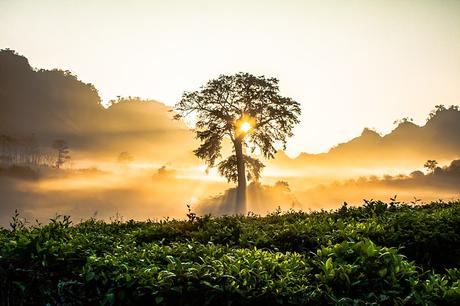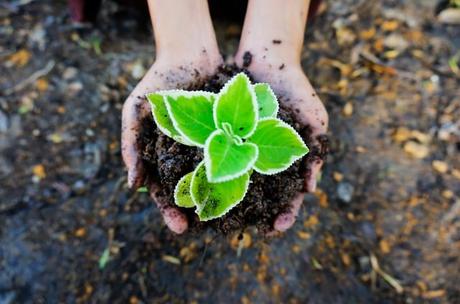What is Agroforestry?
To mitigate the effects of global warming, environmentalists, leaders, and experts have been recommending the adoption of Agroforestry. Also with the increasing demand for food and the negative effects of traditional farming methods, there has been a growing need to adopt a long term vision for tackling food insecurity in more sustainable farming methods. This is how the idea of agroforestry commenced.
Essentially, Agroforestry’s main goal is to combine both modern and traditional land-use systems where trees are managed together with crops or animal production. Agroforestry, therefore, is defined as an agricultural system that involves the interaction of trees, shrubs, and agriculture where they are designed and managed as a whole unit.

In other words, it is the land use management practice of combining both forestry and agriculture (some call it agriculture with trees), with an objective of not only improving crop productivity but also increasing biodiversity and soil fertility, and reducing soil erosion. In agroforestry, the ecological function of trees, crops, and animals can increase food production while at the same time reducing the impact of agriculture on the environment. This article looks at the importance and components of agroforestry.
Importance of Agroforestry
1. Improved nutrition and food security
Planting trees in agricultural lands can help increase food production and boost food security. Moreover, agroforestry helps in health and nutrition improvement due to increased diversity and quality of food outputs. Tree planting, as part of agroforestry, can be used as a source of fuel, food and non-wood products that can be consumed or sold resulting in additional food and security.
Generally, trees can provide nutritious fruits, nuts, and leaves for consumption in households. Felled trees and their residues can be used as wood energy for cooking and heating while leaves can be used as forage for livestock. In addition to food products, agroforestry also supports the production of a wide range of products such as timber, fibre, fodder and forage, craft products, medicinal products, hedging materials, and gums and resins among others.
2. More and more benefits from Trees!
Planting trees, as part of agroforestry practice, can be beneficial for the health and survival of humans, animals, and crops. Trees can block strong winds, protecting crops from damage. Some crops like barley, alfalfa, and winter wheat are also known to thrive under shelter. Combining proper tree species and responsive crops can lead to improved yields.
Trees also protect animals from wind chill in cold days while also providing shade on hot days and thus, helping lower animal stress. Furthermore, changes in temperature can cause irregular feeding habits and hence, growing trees can help increase feeding efficiencies. Trees can also be a source of medicines and natural remedies.
3. Creation of resilient livelihoods
Growing trees together with crops and animals can help reduce the vulnerabilities associated with agricultural production and even improve the recovery after natural disasters, hazards, or socioeconomic downturns. Agroforestry economics, for example, helps to increase the diversity of production within the system thereby reducing the risk of economic failure.
The roots of trees can strengthen the soil structure; mitigating soil erosions, improving soil fertility, and preventing possible landslides. Furthermore, trees can help prevent desertification and its social, agricultural, and environmental consequences. As such, improved and sustainable productivity leads to increases in levels of farms income. It is also worth noting that agroforestry can bring forth sustained employment and higher income, which lead to an improvement in rural living standards.
4. Climate change mitigation and adaptation
Growing trees in agricultural systems can reduce the impact of climate change on agriculture. Sourcing tree products from trees grown on farms reduces the need to cut trees and hence reduce the rate of deforestation that is quickly getting rid of the planets carbon sinks while releasing stored carbon into the environment. Trees in agroforestry systems, therefore, help to mitigate climate change through carbon sequestration.
Further, Agroforestry plays a critical role in improving climatic conditions and weather patterns by modifying microclimatic conditions such as temperature and water vapor content of air and wind speed, resulting in beneficial effects on crop growth and animal welfare. This in general, can limit the effects of climate change and global warming on agriculture as it can help in regulating air quality, water concentration, rain cycles, and patterns, and wind erosion.
5. Environmental benefits
Careful planning and integration of agroforestry can help protect the natural resources in the environment. For example, growing trees can help improve the quality of water and its quantity by filtering and capturing of water resources. Trees also support biodiversity by providing a suitable environment for insects, animals, and plants. If trees with nitrogen-fixation function are part of the system, agroforestry can help restore soil fertility.
Other environmental benefits of agroforestry systems include reduction of pressure on natural forests, more efficient recycling of nutrients by deep-rooted trees on the site, increment in soil nutrients, improvement of microclimate and reduction of surface run-off. The systems also help improve soil structure and provide better protection of ecological systems.
6. Support local communities and cultures
Agroforestry is designed to help local communities and cultures thrive. With the help of agroforestry specialists, indigenous people and local communities can continue with the local beliefs and culture while ensuring long term sustainability of the traditional systems. Furthermore, by preserving indigenous working techniques and species, agroforestry also helps to protect humankind’s agricultural heritage.
It is also worth noting that agroforestry can lead to decent rural livelihoods, cultural diversity and maintaining of local spiritual beliefs. Agroforestry also helps in the stabilization and improvement of local communities by eliminating the need to move sites of farm activities.
7. Can reduce poverty in some areas if practiced sustainably
Trees and tree products have economic value that can get agroforesters a source of livelihood and potentially reduce their poverty levels, especially in developing or emerging economies. The value addition of newly-produced tree products can be a source of employment and income for individuals.
Furthermore, farmers can take advantage of the incentives offered to support agroforestry as sources of income. It is also worth noting that growing trees can help reduce the production costs resulting in increased household income. In addition to increment in outputs of food, fodder, fuelwood, and timber, agroforestry systems also help in the reduction in incidences of total crop failure, which is common in monoculture and single cropping systems.

Components of Agroforestry
In modern agroforestry, the systems are classified based on the present components of its practice. For example, where trees are grown together with crops, the system is referred to as silvoarable whereas silvopastoral is where trees are grown together with animals. Agro-silvopastoral is where plants, animals, and trees are kept together.
It is also becoming increasingly common to find specialized systems like the entomoforestry where trees and insects like silk months and honey bees are the main components and aquaforestry where trees and fish are the main components. Depending with the system, some of the woody components you will find include shelter belts, hedges, alley cropping, orchards, grazed woodland, and pollards among others. Other components include livestock and crop components. Listed below is a more detailed look at the agroforestry components as per the system.
1. Agrisilvicultural systems
In this system, the components are agricultural crops and tree crops intercropped between the trees. The agricultural crops in this system can be grown for up to two years under protective irrigation and up to four years under refined farming. Beyond the specified period, growing grain crops becomes uneconomical but other crop components like fodder crops, shallow-rooted crops, and shade-loving crops can continue to be grown economically. To get the best yields, farmers should adopt wider spacing.
2. Silvopastoral systems
In this system, the components are woody plants that are grown for pasture. The components can be trees or shrubs primarily grown to produce fodder for livestock or for fruit, timber, fuelwood or to improve the soil. This system can be classified into three categories that include protein bank, live fence of fodder trees and hedges, and hedges and shrubs on pasture.
3. Protein Bank
In this category, the system components are multipurpose trees that are usually protein-rich trees planted in or around the farmlands for providing animal feeds. The common components in this system are Acacia nilotica, Azadirachta indica, Albizia lebbeck, Gliricidia sepium, Leucaena leucocephala, and Sesbania grandiflora.
4. Live fence of fodder trees and hedges
In this category, hedges and fodder trees are planted as a live fence. The common components in this category are Erythrina sp, Sesbania grandiflora, Gliricidia sepium, and Acacia sp.
5. Trees and shrubs on pasture
In this category, various shrub and tree species are planted irregularly or in a systematic pattern to supplement forage production. Some of the common components in this category are Acacia leucopheloea, Acacia nilotica, Azadirachta indica, and Tamarindus indica.
6. Agrosilvopastoral systems
In this system, woody perennials are combined with annuals and pastures. The systems can be classified into two categories that include home gardens and woody hedgerows for browse, green manure, mulch, and soil conservation.
7. Home gardens
This system is more common in areas with high rainfall areas in South and Southeast Asia where coconut is the main crop. Many tree species can be used in this system as well as vegetables, bushes, and herbaceous plants are grown randomly or in special or temporal arrangements. The system also supports a variety of animal components.
Home gardens are more sustainable, highly productive and very practicable for food production. The woody components for home gardens are Artocarpus heterophyllus, Anacardium occidentale, cocus Nucifera, Psidium guajava, Azadirachta indica, Citrus spp, and Anacardium occidentale. The herbaceous components include Onion, Bhendi, pumpkin, cabbage, beans, banana, and sweet potato.
8. Woody hedgerows
In this system, woody hedges especially the fast-growing, are preferred for the purpose of mulch, browse, soil conservation and green manure. The common components include Leucaena luecocephala, Erythrina sp, viz, and sesbania Grandiflora.
9. Other systems:
Other systems such as apiculture with trees, aquaforestry and mixed wood lots also exist. In apiculture system with trees, the main components are honey bees and trees that encourage honey production. In the aquaforestry system, the main components are fish and trees and shrubs that are preferred by fish. In the system, the leaves are used as feed for fish while the trees are used for bund stabilization around the fish ponds. In Mixed wood lots, multipurpose trees are grown mixed or separately for various uses such as fodder, wood, soil reclamation, and soil conservation.

